Detroit is back – and this time it means it

It would be an exaggeration to describe the events which occurred last week, two miles along Michigan Avenue, as “a resurrection”. But even by Detroit’s standards, it was quite the comeback. For there, in the midsummer sunshine of June 6, was Michigan Central Station, Detroit’s most notable and notorious building, finally restored to its full glory, after the best part of four decades in the void.
And no, the miracle did not involve the return of trains. Instead, it featured a concert starring some of Detroit’s biggest musical alumni – Diana Ross, Jack White, Eminem – and a blaze of fireworks. All the same, it marked a moment that many in the city had thought impossible – the day an architectural icon of a distant, damaged past, would come back to the present tense.

The term “ruin porn” – that photographic fascination with once-glorious landmarks, reduced to despair – might have been coined for this 15-storey quasi-cathedral of marble and limestone. Certainly, numerous cameras had salivated over its broken windows and roofless interiors in the 36 years since the final train had pulled away, on January 6 1988.
But worse than this, the station had become a symbol of Detroit’s own decline. It was a visual representation of a city which had risen freely in the early 20th century – the birthplace of the car; the home of General Motors, Ford and their tireless factories; a boom-zone where graceful Art Deco skyscrapers had taken flight in the Roaring Twenties – only to fall into crisis. The contributing causes are well-documented – the Wall Street Crash, the Depression, the Second World War, the race riots of the Sixties; each punch increasingly sending the wealthier (and, generally, whiter) residents scurrying for suburbia. By 1988, Michigan Central, the gate through which thousands had poured north, seeking jobs on the production lines, was reduced to nothingness.
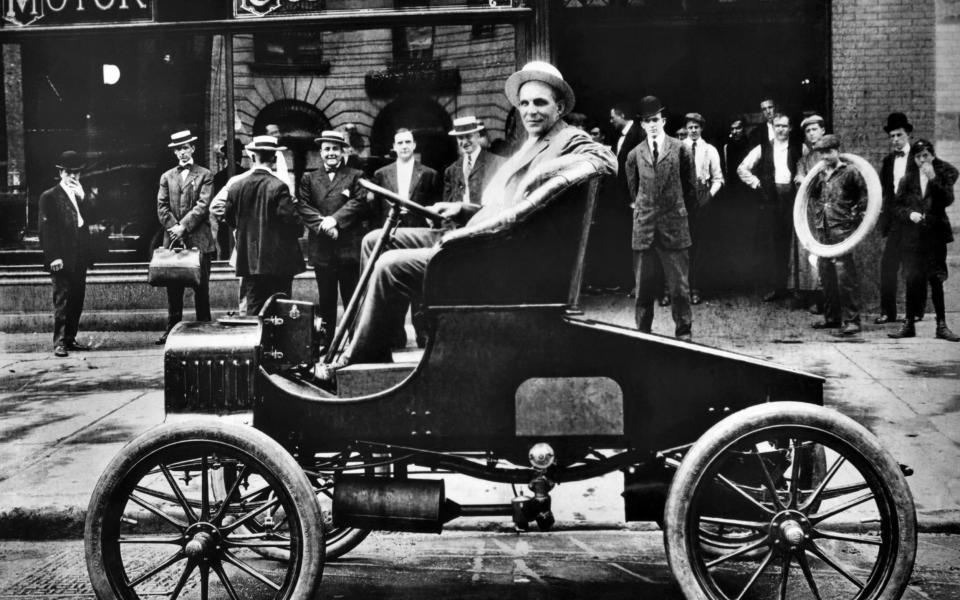
But the death of Detroit has always been somewhat over-egged. Even in its toughest years, it has been a place of inexhaustible work-ethic and hard industry – this sweat and steel softened by an impressive musical streak that nurtured the likes of Madonna, Iggy Pop, the MC5, and a whole galaxy of Motown acts.
However, the optics of the station’s revival cannot be understated. The reopening is, to an extent, a PR exercise. An expensive one. Ford bought the site in 2018, and has since pumped US$1 billion (£786 million) into its wellbeing. But the glee with which the renovation has been greeted is genuine. The 15,000 free tickets for the concert could have been handed out many times over; each of the 5,000 timed entry slots for the “open house” tours that run until June 16 has been booked. On the morning after the show, queues of visitors for the complex snaked around the block.
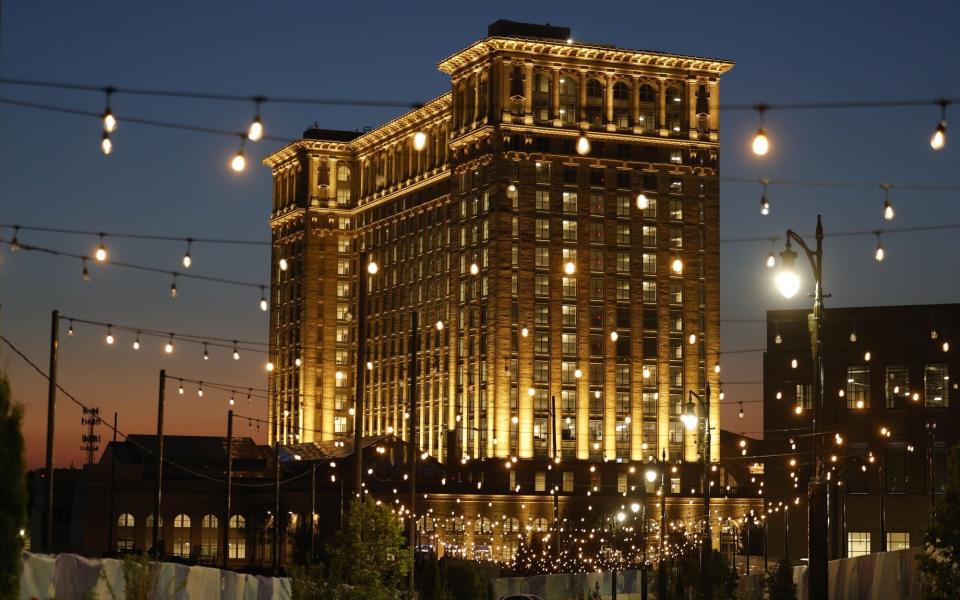
Ford has ambitious plans for its high-price project, and intends to fill the offices in the upper storeys – which were never fully occupied, even in the Roaring Twenties – with tech companies and innovative start-ups. But the ground floors will be open to the public.
“People in Detroit have strong emotional ties to this building,” Melissa Dittmer, one of the architects behind the restoration, tells me. “They worked here, they caught trains here, they met family here.” As the work began, she explains, fittings which had disappeared from the ruin were quietly returned – not least the iron clock which had adorned the adjacent Carriage House. This was found, carefully wrapped, at a specified location, following an anonymous phone call. “Many pieces were genuinely taken away for safe-keeping,” she adds. “We continue to get e-mails about things which can come back.”
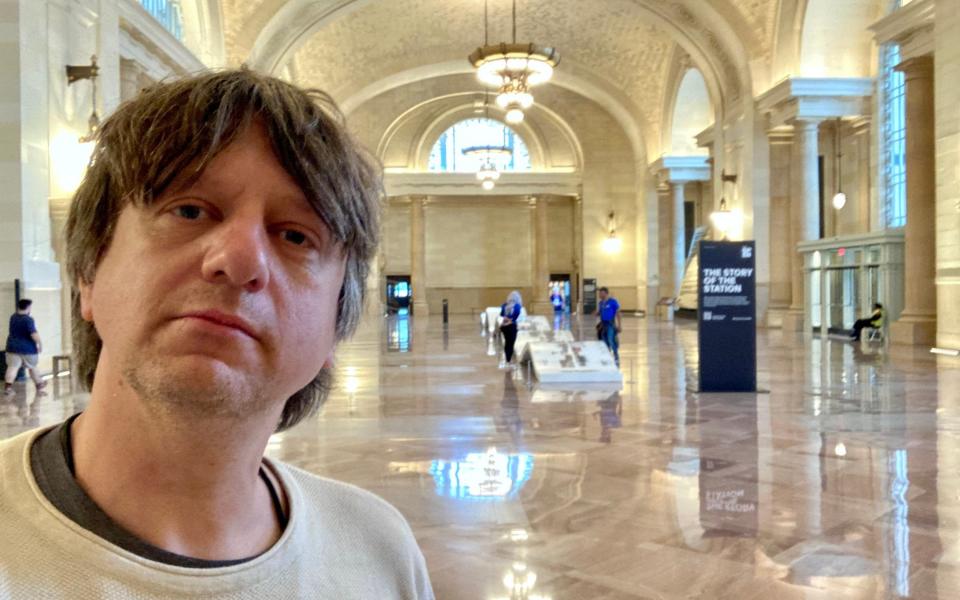
The process was, though, more than a matter of reconfiguring a jigsaw. “The first 18 months were all about stabilising the structure, and making sure that it was safe for people to work in,” Dittmer continues. “We also conducted an extensive amount of historical research, sourcing the original blueprints, and going back to the first drawings.”
This attention to detail is palpable. The Grand Hall – a sparkling space of arches and chandeliers, akin to New York’s Grand Central – has been polished to its former majesty. And the ticket office has been cleverly repurposed – as a gallery, where various posters celebrate Detroit’s story, via adverts for steam-locomotive journeys, and vintage flyers for concerts at the Fox Theatre and the Fillmore.
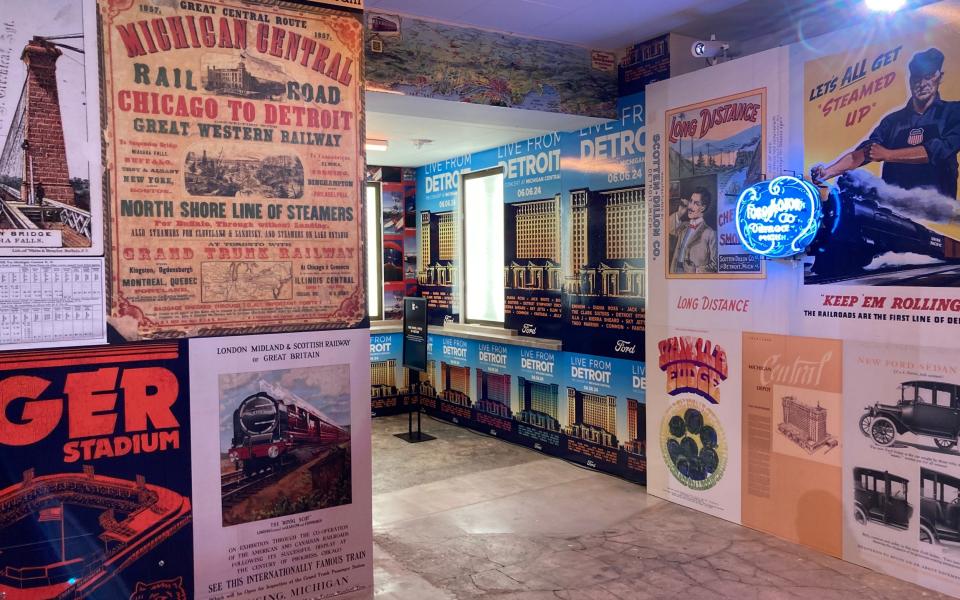
Other areas are still artfully, deliberately, distressed – columns where the limestone is pitted with water-marks; graffiti murals from the dereliction decades. “The building was a living canvas back then,” Dittmer says. “And that was an important chapter in its history. We did not want that to be airbrushed.”
The station’s return has proved a gift to the surrounding neighbourhood. In the six years since Ford announced its intentions, investment has cascaded into Corktown. Imbued with a history of its own, Detroit’s oldest district took shape from 1834 onwards, its ranks subsequently swelled by Irish immigrants escaping the Great Famine. Twenty years ago, it was as dilapidated as any section of the city. Now, it has a renewed energy, not just in the desirable apartment blocks piling up along Michigan Avenue, but in cool restaurants (the char-grilled meats of Slows Bar BQ; the Italian cuisine at Ottava Via), and a Hilton hotel – the Godfrey – which has helped to make Corktown a destination in its own right.
You might even consider it a plan coming together. One of the station’s issues was always its location – an inconvenient two miles west of Downtown. The dream, in 1913, had been of a commercial magnet that would draw business out of the centre, joining the dots in a new burst of expansion. Perhaps the idea was always sound. It just needed 111 years.
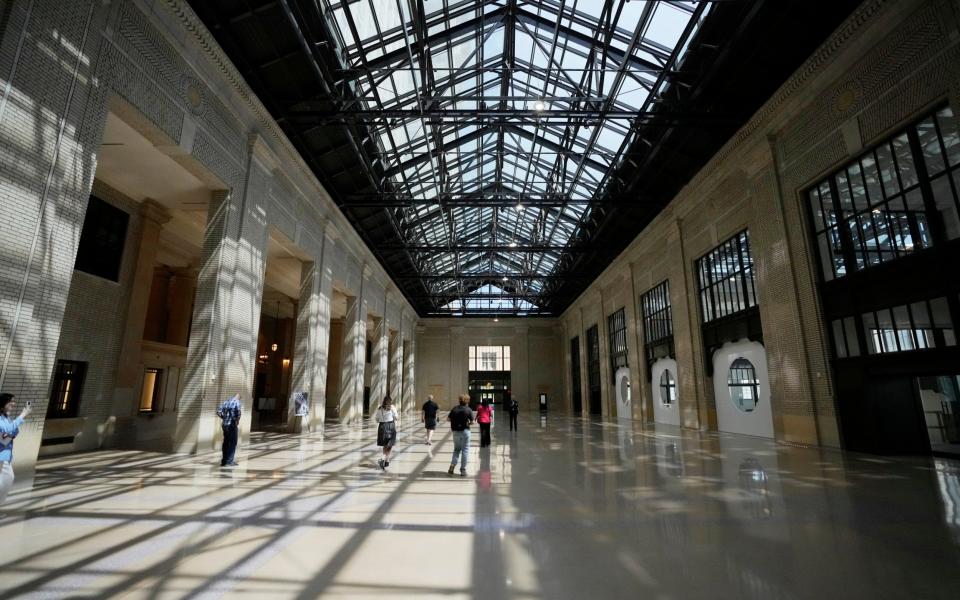
The transformation is remarkable, even for those who have long called the city home – among them Bailey Sisoy-Moore of Detroit History Tours, whose roots go deep into the Michigan soil. Like many locals, she alludes to teenage escapades, sneaking into the station during its lost decades, and is audibly proud at seeing it so revitalised. “I never thought I would live to see the day it reopened,” she says from behind an enormous grin.
Her own story parallels the city’s upward curve. She founded her company in 2010, when Detroit had plenty to look back on, but less to celebrate. In the intervening 14 years, business has boomed. Guided tours now cover everything from the optimistic architecture which preceded the Crash, and Downtown’s food hotspots, to famous felons, baseball and the US Civil War. She shows me some of the other green shoots sprouting beyond Corktown – not least Riverside Park, which opened new sections in May. A post-wedding barbecue is in swing on the grass.
The station is not the only major construction site. Away to the south-west, the Gordie Howe International is almost making ends meet – a spectacular suspension bridge named after the ice-hockey mainstay whose career included 25 seasons playing for the Detroit Red Wings. When finished, it will connect the city to Canada’s Windsor, opposite, giving the ‘International’ to its name.
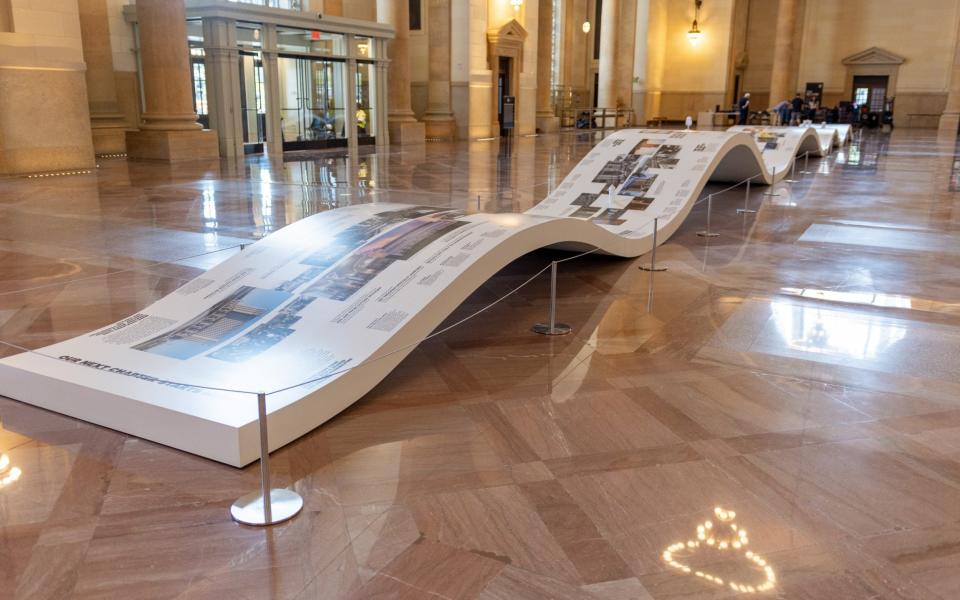
But you don’t need a guide to go searching for history. It is there, clearly, to the north, in Milwaukee Junction, where the Ford Piquette Avenue Plant protects the original production hub for the Model T, with plenty of examples of the automobile on display.
It is also there, seven minutes west of the centre in Dearborn, amid the classic cars and museum-village of the Henry Ford complex. And this is before you delve into the gold discs and studio alchemy of the Motown Museum – already an essential stop on a tour of the city, now midway through a $55 million (£43 million) rejig that will only burnish its lustre.
Yet for all these yesterdays, there is, for the first time in a while, a proper sense of today and tomorrow. Downtown, once the heart of the vacuum, has also grown in the 14 or so years since Michigan billionaire philanthropist Dan Gilbert began acquiring historic skyscrapers – such as the Dime Building and the David Stott Building – and gave them new impetus.
This mood has proved infectious. Outside, restaurants and bars on Woodward Avenue – San Morello; Gilly’s Clubhouse – have evening crowds and a discernible buzz. And I notice signs of change that were not apparent to me on prior visits: dogs being walked for leisure and pleasure on evening strolls; the bright burbles of children’s voices, and the pushchairs in residential stairwells which speak of family life. If this transformation continues, America’s most misunderstood major city is in serious danger of finally receiving a fair hearing.
How to do it
Getting there
Delta (0871 221 1222; delta.com) flies direct to Detroit twice a day from Heathrow.
Staying there
The Godfrey Detroit (001 313 385 0000; hilton.com) offers double rooms from £125. The Hotel David Whitney (001 313 237 1700; marriott.com) offers doubles from £330.
Touring there
Original Travel (020 3958 6120; originaltravel.co.uk) serves up “Art, Architecture and Music in the Midwest” – a nine-day road-trip through Michigan and Ohio which spends time in Detroit and Cleveland. From £2,430 per person – including flights and rental car.
Visiting
michigancentral.com; detroithistorytours.com; fordpiquetteplant.org; thehenryford.org; motownmuseum.org


